Schramberg
Antique Art Nouveau Light Green Majolica "Lilly of the Valley" Plates - SMF Schramberg - Set of 3 - 1920s
Antique Art Nouveau Light Green Majolica "Lilly of the Valley" Plates - SMF Schramberg - Set of 3 - 1920s
Couldn't load pickup availability
Celebrate the refined craftsmanship of vintage majolica with this set of three SMF Schramberg plates from the 1920s. Two plates feature the iconic Lilly-of-the-Valley pattern, one a sweet bundle of wheats and cornflowers.
Presented in a soothing blue-ish green tone, each plate is adorned with dainty, hand-painted floral motifs that evoke a sense of classic charm. The textured background and elegant scalloped, reticulated edges elevate these pieces, reflecting the meticulous detail characteristic of the period.
In good condition if slightly faded in places, this set offers a unique touch of vintage sophistication, perfect for enhancing your table setting or serving as a delightful addition to your collection.
- Material: Majolica
- Techniques: Hand-Painted
- Style: Art Nouveau
- Place of Origin: Germany
- Date of Manufacture: 1920s
- Condition: Good vintage condition, a few slight scratches, some crazing.
Dimension:
Diameter: 20.5 cm | 8 in
Height: 2 cm | 0.7 in
Share
- Worldwide Shipping
- Secure Packaging
- Loving Curation
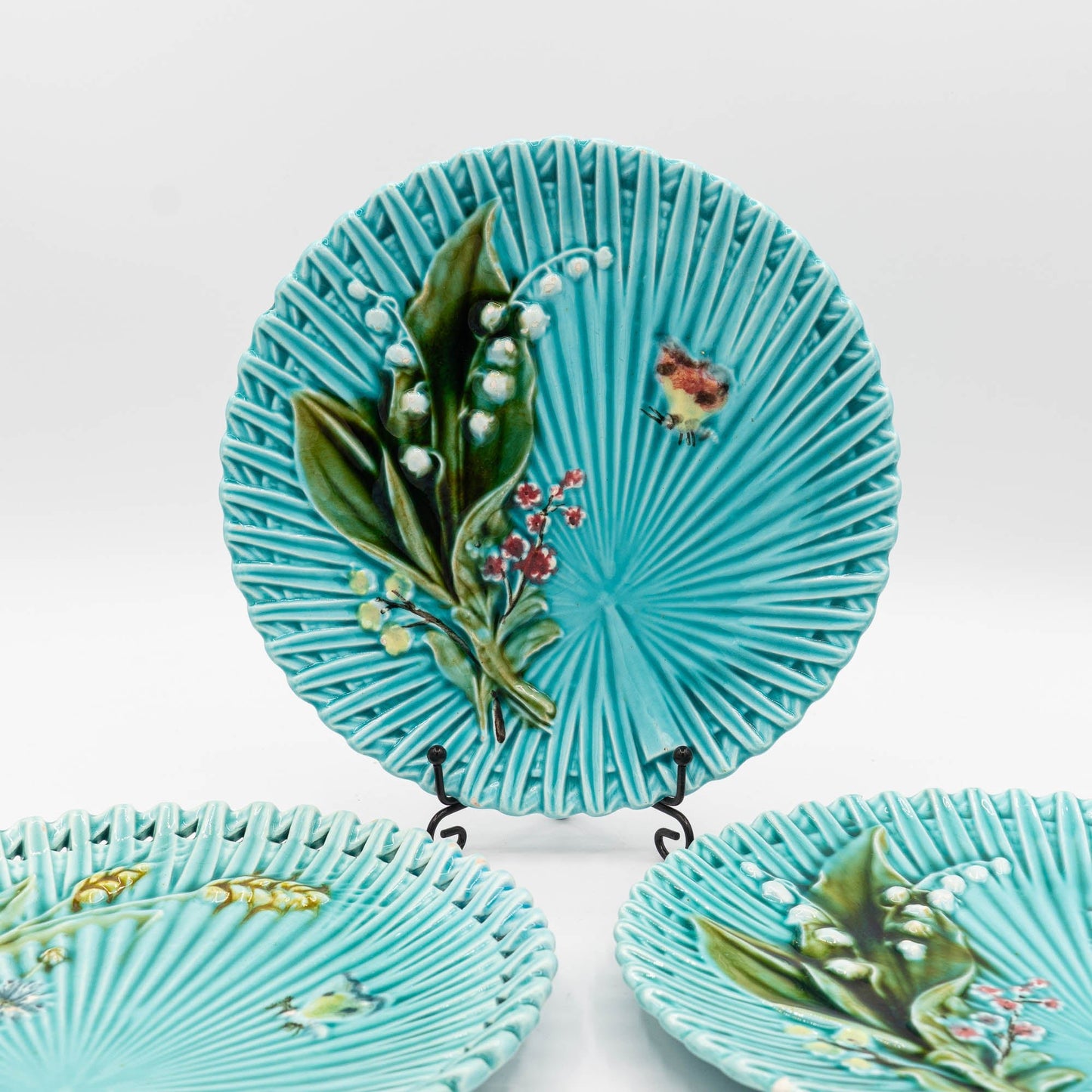
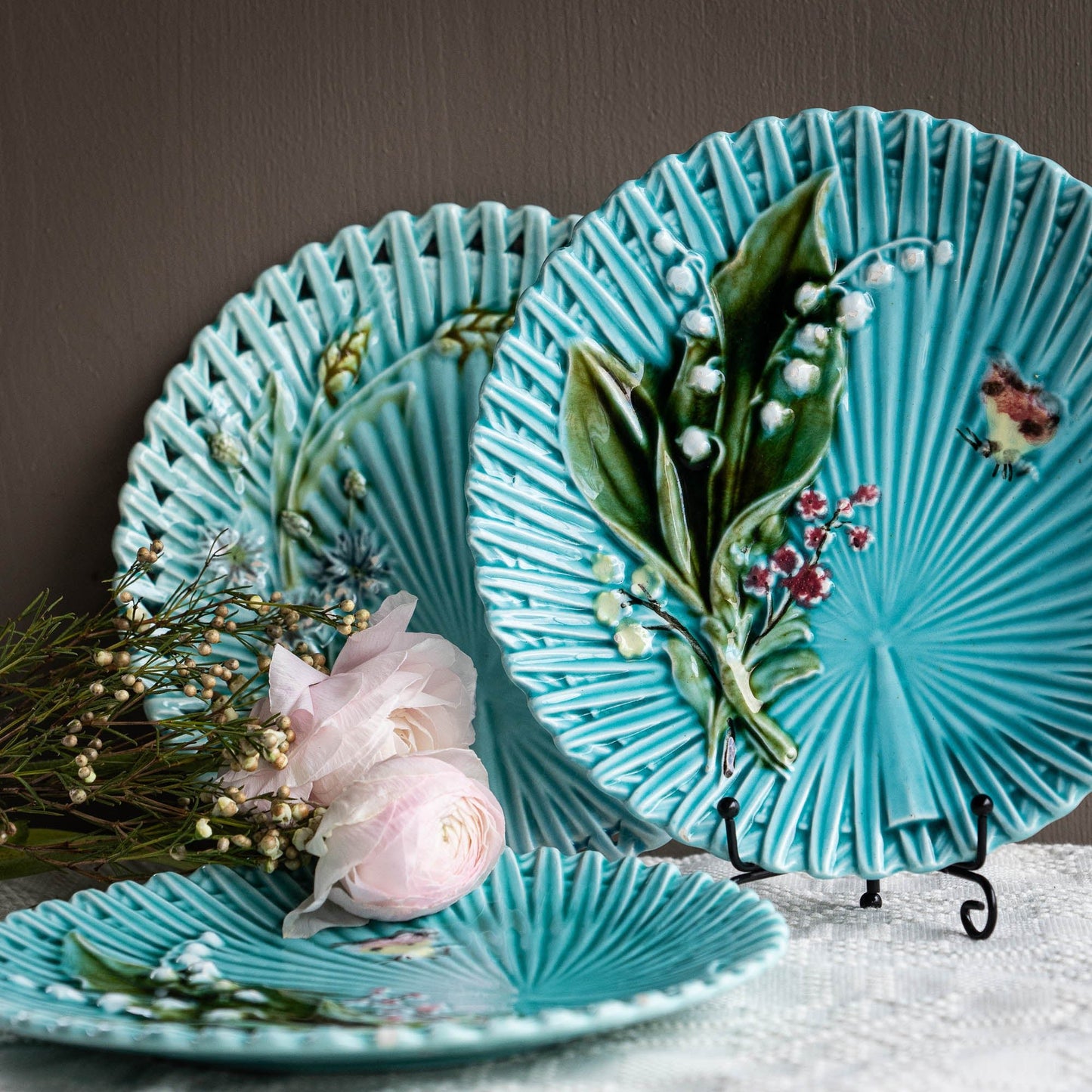
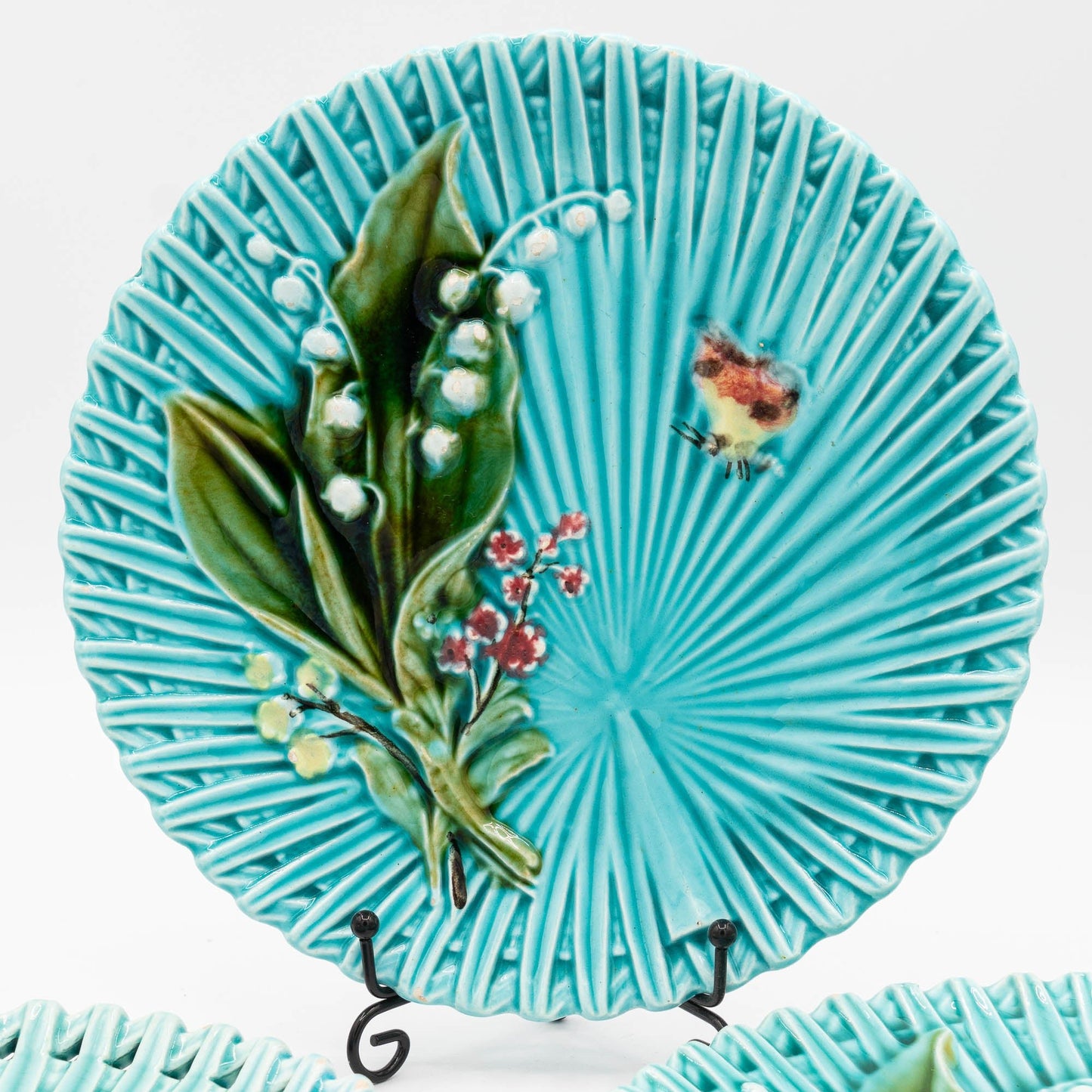
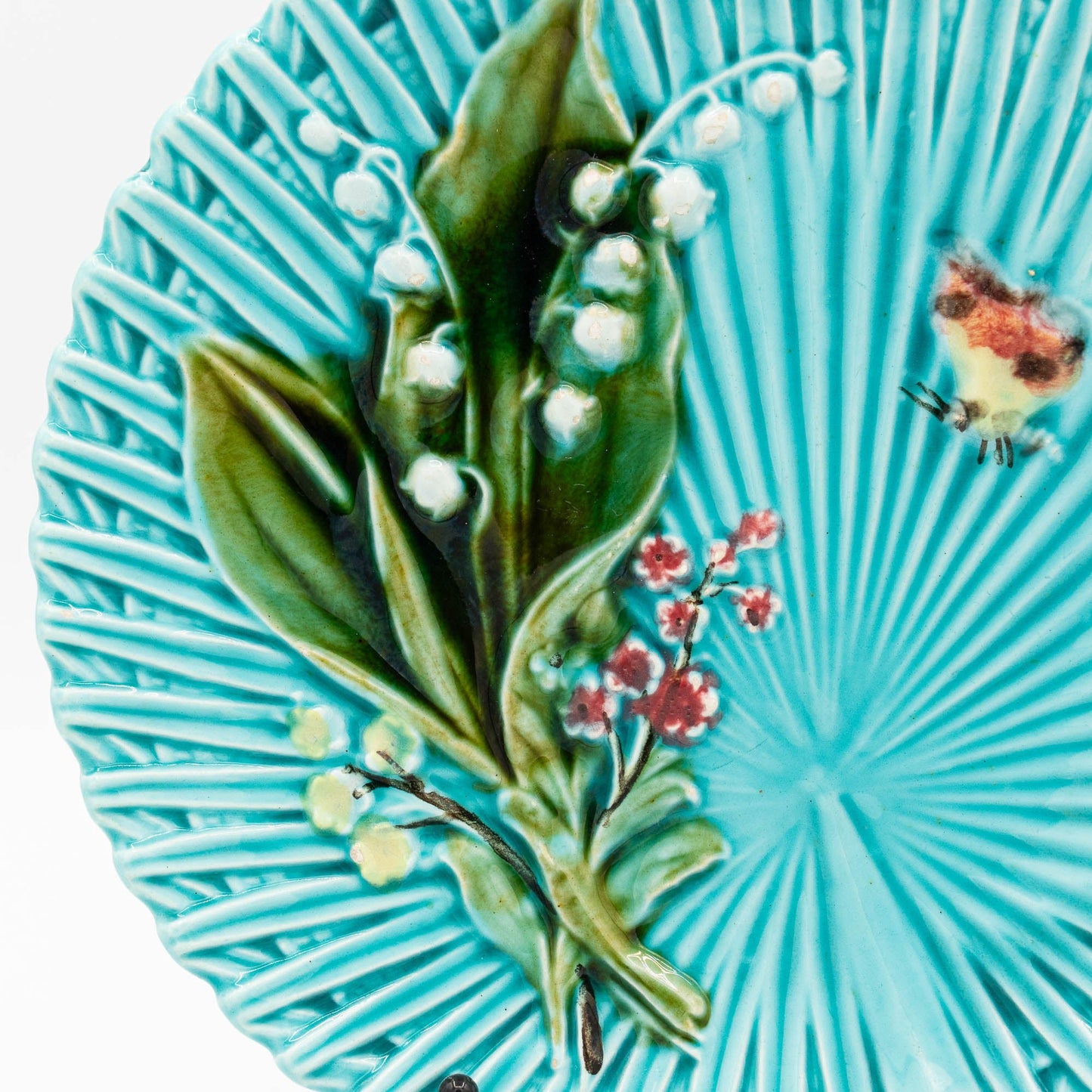
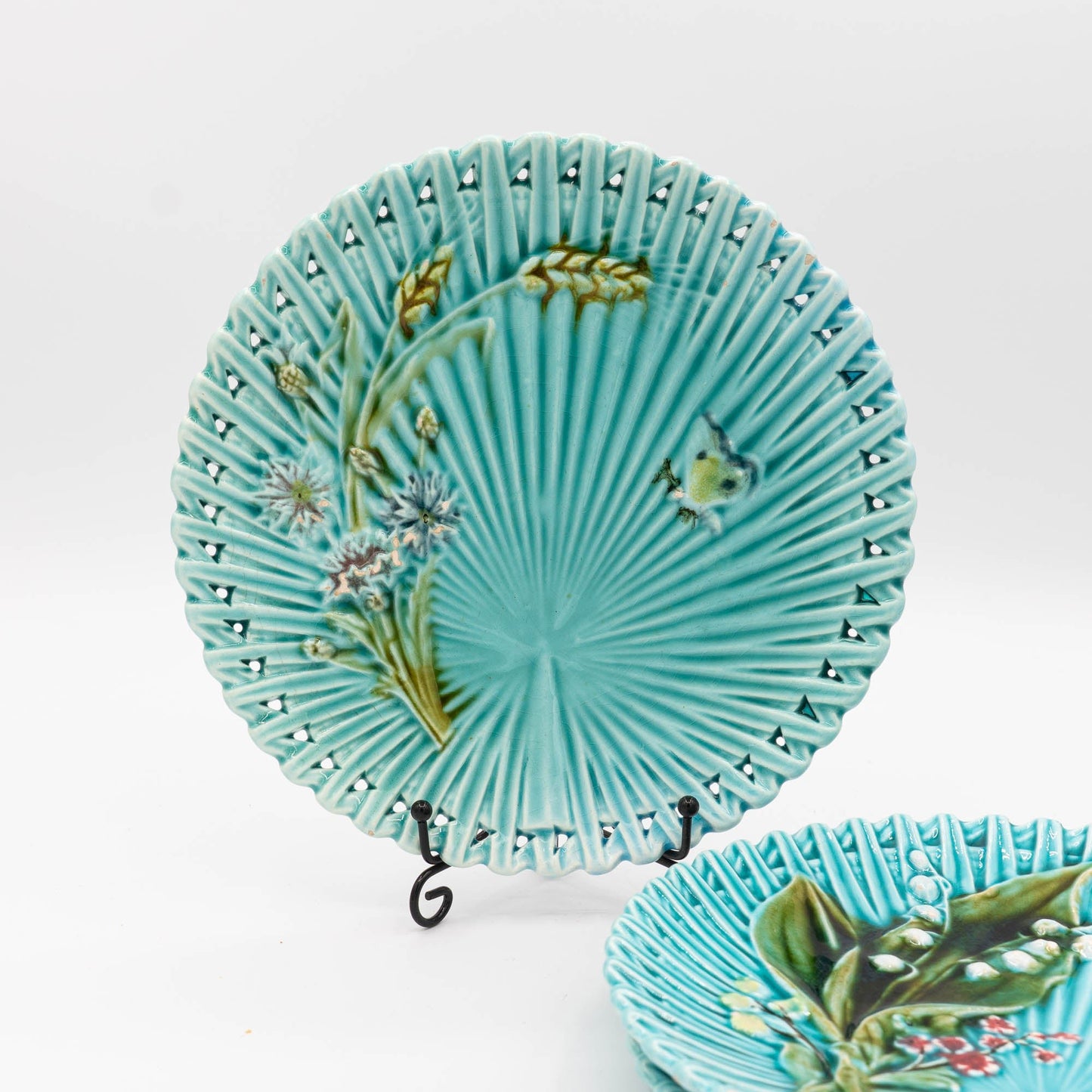
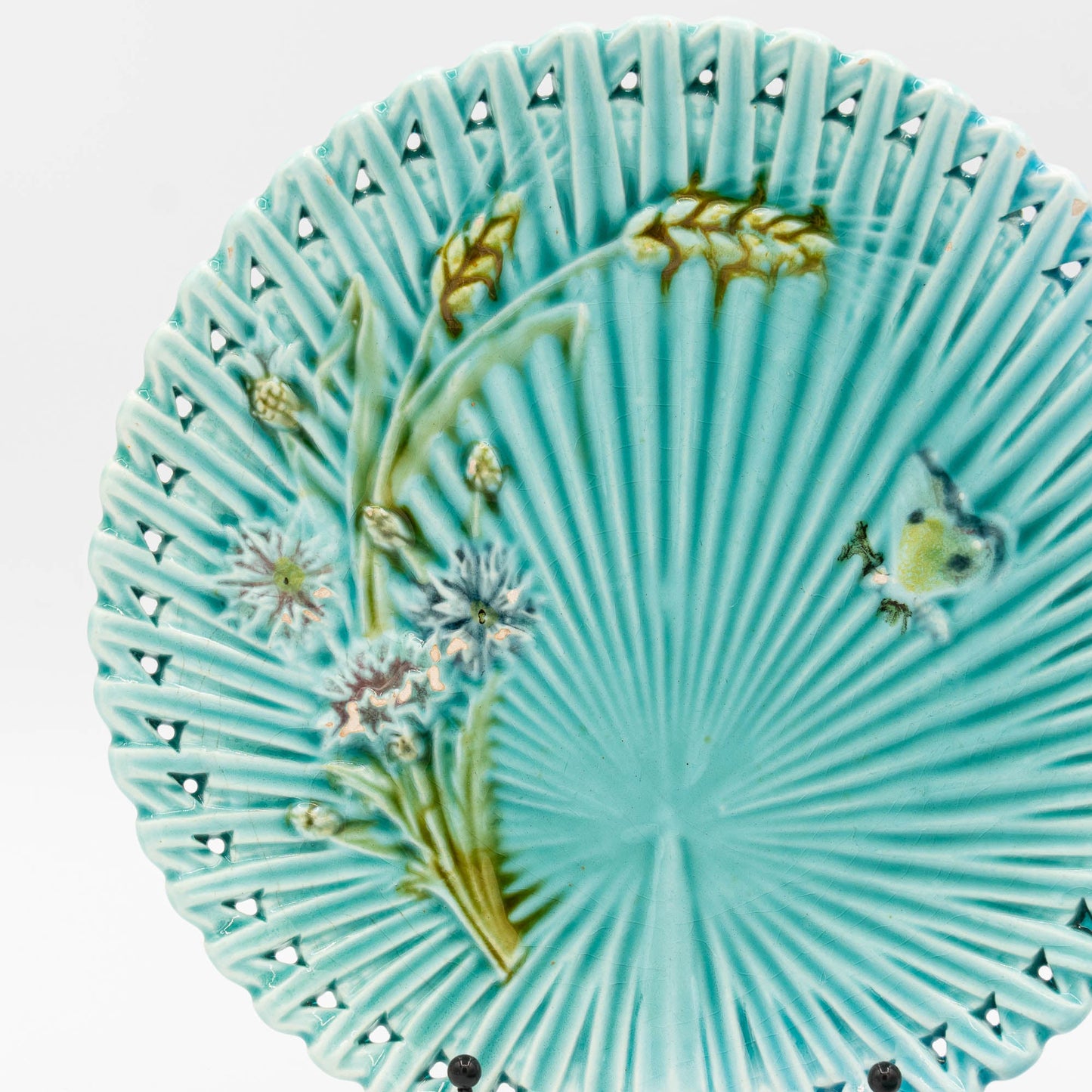
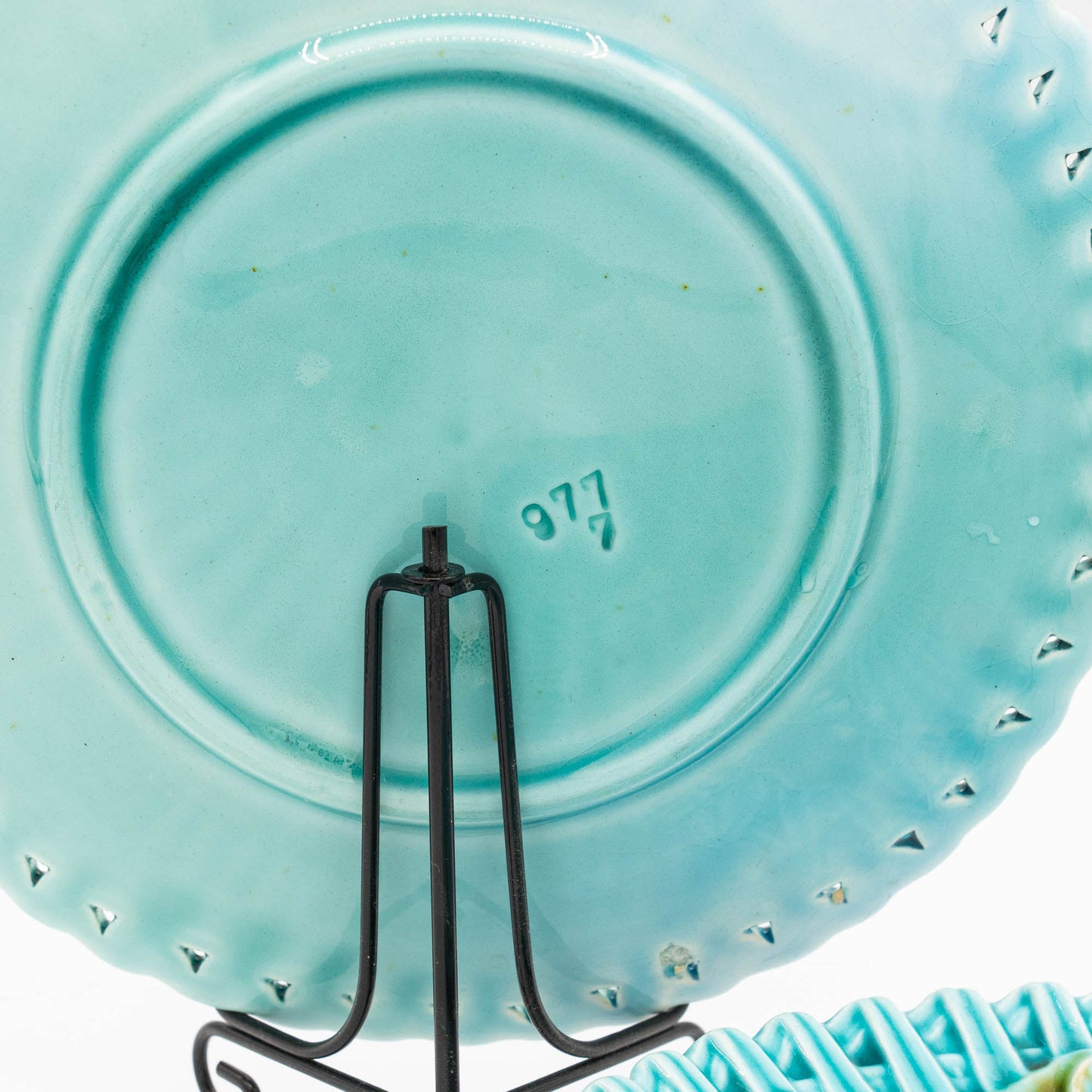
Origin & Maker
Schramberg Majolika, founded in 1820 in the town of Schramberg in Germany’s Black Forest region, quickly established itself as one of the leading manufacturers of pottery and earthenware. Known for its high-quality craftsmanship and innovative designs, the company produced a wide range of items, from functional kitchenware to decorative ceramics. Schramberg was especially famous for its Majolica pottery, characterized by its rich, colorful glazes, intricate designs, and distinctive textures. Throughout its history, the company collaborated with renowned artists and designers, contributing to its reputation for cutting-edge and stylish pieces.
In the mid-20th century, Schramberg's designs took on a distinctly modernist flair, with patterns such as Bernau gaining widespread popularity. Introduced in the 1960s, the Bernau pattern is a vivid example of mid-century design, featuring bold, raised floral motifs in striking colors. This pattern, with its tactile appeal and durable ironstone base, became an instant hit and remains highly sought after by collectors today. The combination of a glossy, majolica-like glaze and the raised texture of the Bernau pattern made it both visually stunning and a joy to handle, securing Schramberg's place in the hearts of pottery lovers.
Blog posts
View all-

A Serendipitous Morning at the Rue de Bretagne ...
There are few joys in life that match the thrill of stumbling upon a hidden treasure, and for me, flea markets hold that magical allure. One of my favourite flea...
A Serendipitous Morning at the Rue de Bretagne ...
There are few joys in life that match the thrill of stumbling upon a hidden treasure, and for me, flea markets hold that magical allure. One of my favourite flea...
-

Emile Bourgeois and "Le Grand Dépôt" in Paris
Recently, I found this stunning Sarreguemines wash set. It was at the Brocante in Belfort, France. On this day, we had got up at 4 AM to be there in...
Emile Bourgeois and "Le Grand Dépôt" in Paris
Recently, I found this stunning Sarreguemines wash set. It was at the Brocante in Belfort, France. On this day, we had got up at 4 AM to be there in...
-

The Legacy of Robert Haviland: A Journey from N...
The story of Robert Haviland porcelain is one of artistry, transatlantic ambition, and enduring heritage. It begins in the mid-19th century when David Haviland, an enterprising New Yorker, founded Haviland...
The Legacy of Robert Haviland: A Journey from N...
The story of Robert Haviland porcelain is one of artistry, transatlantic ambition, and enduring heritage. It begins in the mid-19th century when David Haviland, an enterprising New Yorker, founded Haviland...










